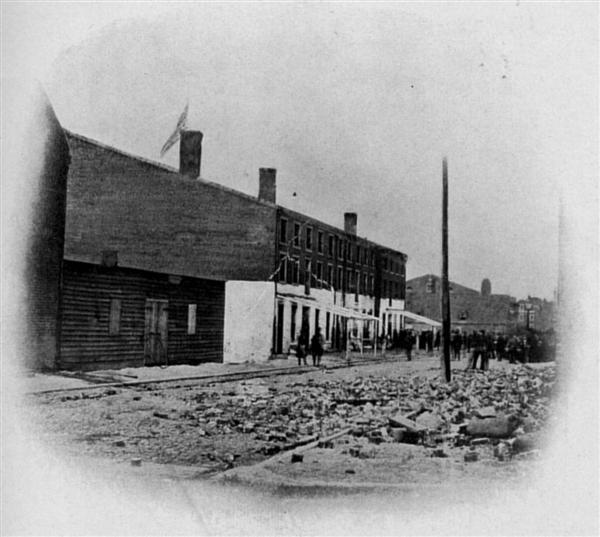|

Libby
Prison after the War — Ruins in the Foreground
This photograph was taken in April, 1865, after the city
bad passed into the hands of the Federals. The near-by buildings had been
destroyed, and the foreground is strewn with debris and bricks. The prison
was purchased as a speculation some time after the war and transported to
Chicago. The enterprise, like every other monument of bitterness, failed and
has since been destroyed. While it was still standing, among its exhibits
were some ghastly drawings of the horrors of Andersonville, under the charge
of an old soldier whose duty it was to dilate upon them. One day his account
of the unspeakable misery there so inflamed the mind of a young man
belonging to the generation after the war that he broke into cursing and
reviling of the Confederacy. The Union veteran listened quietly for a
moment, and then said: "That's all over now, and both sides are glad of it.
If the truth were known, I guess we did pretty nearly as bad in some of our
prisons, especially considering our superior resources. Just stow away that
cussing, young man. If there's. any cussing to be done, we old soldiers will
do it — and we don't want to." Happily, the above furnishes no hint of the
dark side of war. |
